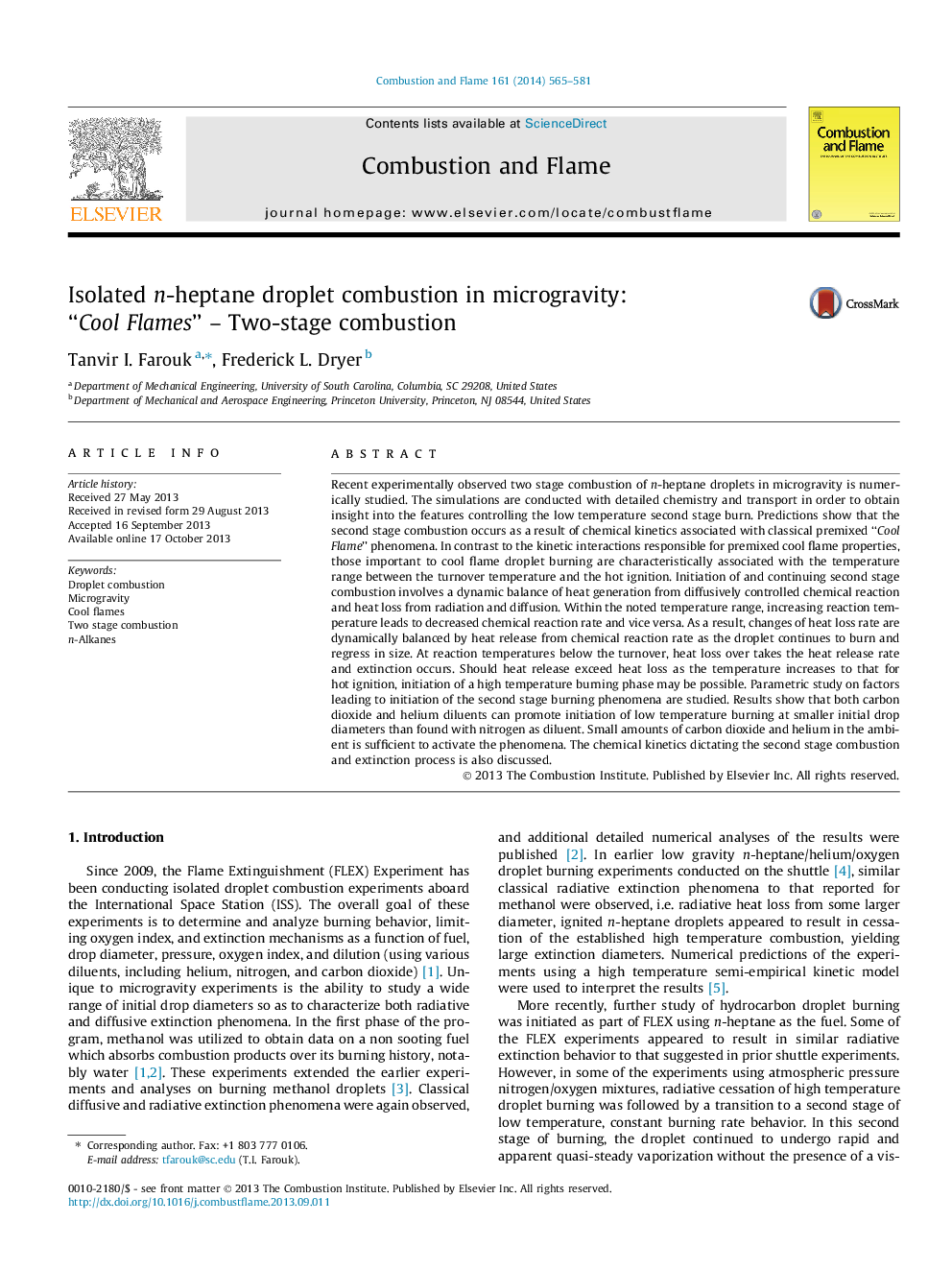| کد مقاله | کد نشریه | سال انتشار | مقاله انگلیسی | نسخه تمام متن |
|---|---|---|---|---|
| 169023 | 457972 | 2014 | 17 صفحه PDF | دانلود رایگان |

Recent experimentally observed two stage combustion of n-heptane droplets in microgravity is numerically studied. The simulations are conducted with detailed chemistry and transport in order to obtain insight into the features controlling the low temperature second stage burn. Predictions show that the second stage combustion occurs as a result of chemical kinetics associated with classical premixed “Cool Flame” phenomena. In contrast to the kinetic interactions responsible for premixed cool flame properties, those important to cool flame droplet burning are characteristically associated with the temperature range between the turnover temperature and the hot ignition. Initiation of and continuing second stage combustion involves a dynamic balance of heat generation from diffusively controlled chemical reaction and heat loss from radiation and diffusion. Within the noted temperature range, increasing reaction temperature leads to decreased chemical reaction rate and vice versa. As a result, changes of heat loss rate are dynamically balanced by heat release from chemical reaction rate as the droplet continues to burn and regress in size. At reaction temperatures below the turnover, heat loss over takes the heat release rate and extinction occurs. Should heat release exceed heat loss as the temperature increases to that for hot ignition, initiation of a high temperature burning phase may be possible. Parametric study on factors leading to initiation of the second stage burning phenomena are studied. Results show that both carbon dioxide and helium diluents can promote initiation of low temperature burning at smaller initial drop diameters than found with nitrogen as diluent. Small amounts of carbon dioxide and helium in the ambient is sufficient to activate the phenomena. The chemical kinetics dictating the second stage combustion and extinction process is also discussed.
Journal: Combustion and Flame - Volume 161, Issue 2, February 2014, Pages 565–581